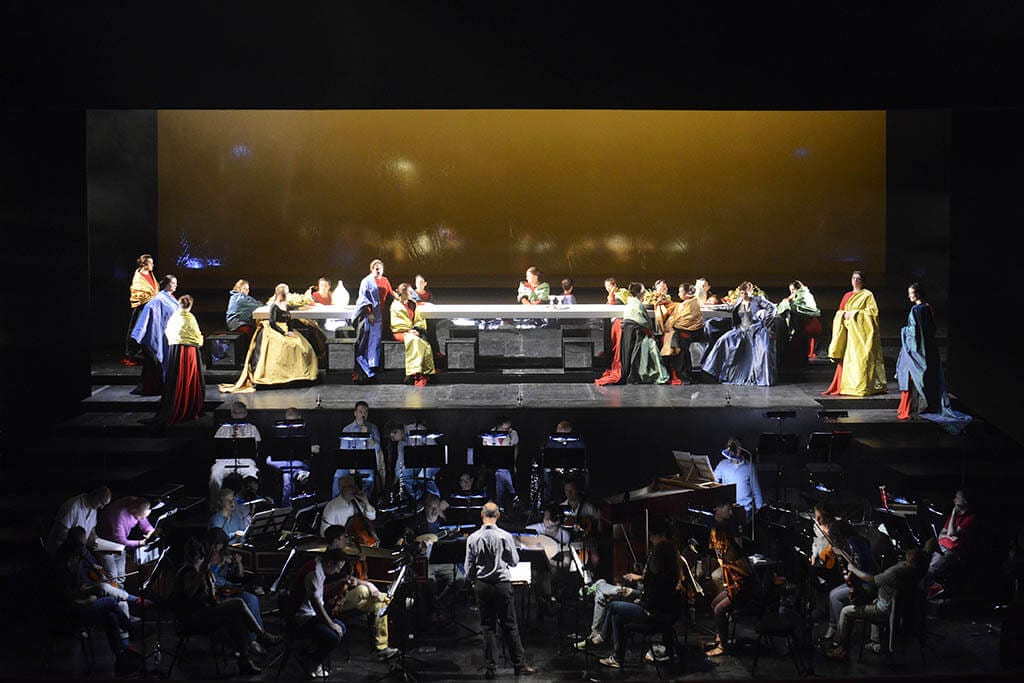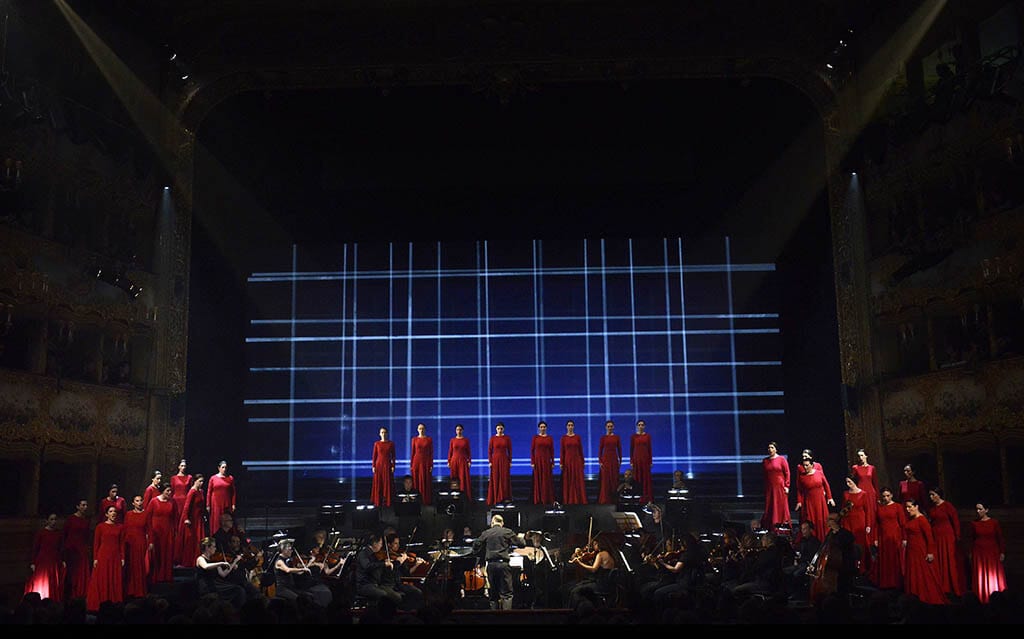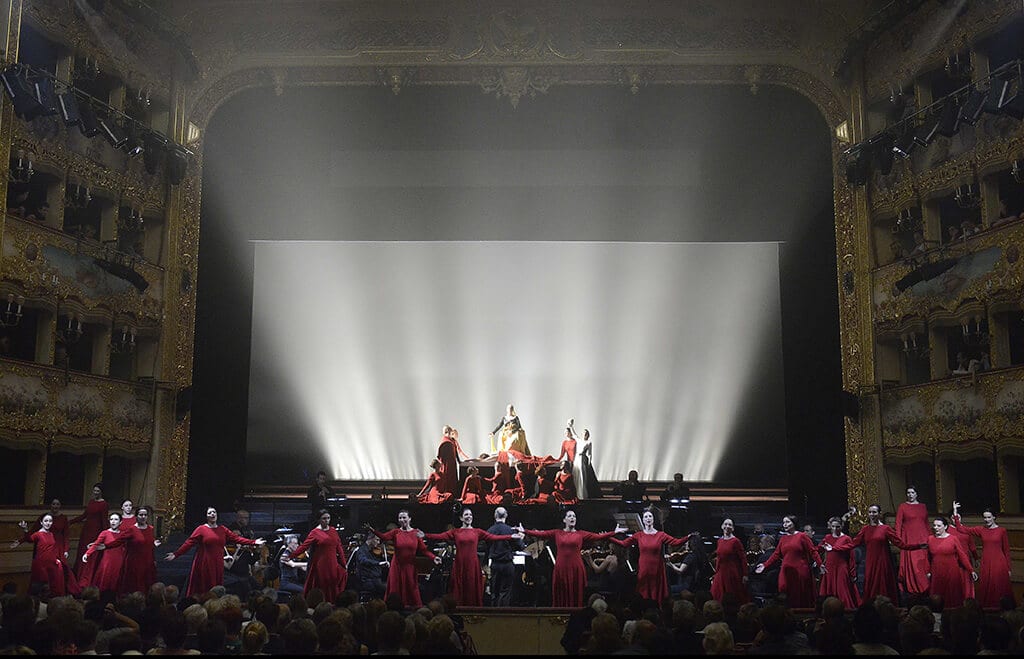In the splendour of the Venetian opera house, La Fenice, Elena Barbalich’s production of Antonio Vivaldi’s Juditha Triumphans is a stupendous triumph.
The long Latin title simply means ‘Judith Triumphant over the Barbarians of Holofernes’. The apocryphal story of Judith, who seduces and beheads the invader Holofernes, is used by Vivaldi as an allegory to celebrate the Venetian victory over the Turks in August 1716 in the battle and defense of the island of Corfu, the Venetian Republic’s last foothold in Greece. The Venetians are represented by the eponymous heroine, Judith, and the Turks, by her people’s nemesis, the Assyrian general, Holofernes.
The earliest productions were entirely performed by female singers, all members of the Pietà, an orphanage for girls, where Vivaldi held the position of maestro di violin. In accordance with the composer’s intentions, this version, surprisingly the first proper stage production in Venice, has an all-female cast. This is a feast of a performance, where the female chorus heightens the dramatic impact of the narrative, moving more than once, from stage down to the auditorium and encircling the orchestra, in beautifully choreographed movements.
One must appreciate that Baroque oratorios present a formidable challenge to opera directors because the original records provide neither stage directions nor any coherent sequences of events. Elena Barbalich’s production superbly realizes the dynamic and dramatic web of staging of Juditha.
This production benefits from first class choreography, costume design, and stunning lighting effects, without doubt inspired by the American artist, James Turrell. Some of the scenes are particularly memorable. These include the banqueting scene, which is redolent of Renaissance paintings by Caravaggio and others, while the choir sings Mundi Rector, revealed as an array of small lights against a dark background, representing harp-playing Jewish maidens in Bethulia.
The five principal singers and choir work well together and give an accomplished account as both vocalists and also dramatic artists. Manuela Custer (contralto) is a sensual and seductive Juditha, Teresa Iervolino (contralto) exquisitely commands authority befitting her role as Holofernes, Paola Gardina, his sidekick Vagaus (soprano) delivers a moving ‘Armatae face et anguibus’. Francesca Ascioti is Ozias the Jewish High Priest (contralto). The soprano, Giulia Semenzato as Abra, (Juditha’s handmaid) is particularly fine.
Much of the music is emphatically military in character, in keeping with the occasion for which it was written, with the trumpets setting the scene at the start and ending in a similar martial vein. Sandwiched between the opening and the end there are, in this oratorio, many tender, affecting pieces reflecting the rapid changes of mood.
The orchestra, playing early instruments such as the theorbos, the mandolin, the chalumeau, and the harpsichord, directed by Maestro Alessandro De Marchi, filled the auditorium with brilliantly rich sounds befitting the composition of this baroque composer.
La Fenice’s programme for this production is a model that deserves to be emulated for opera programmes elsewhere. It not only contains a full libretto, but also a series of learned essays on the background to the work and various aspects associated with it and its genre, its staging and its performances in Venice and more generally. Detailed notes and a comprehensive bibliography are also included.
All-in-all this first operatic rendering of Juditha triumphans, at least in modern times, is a worthy yardstick against which all future productions of this great work are bound to be judged.




